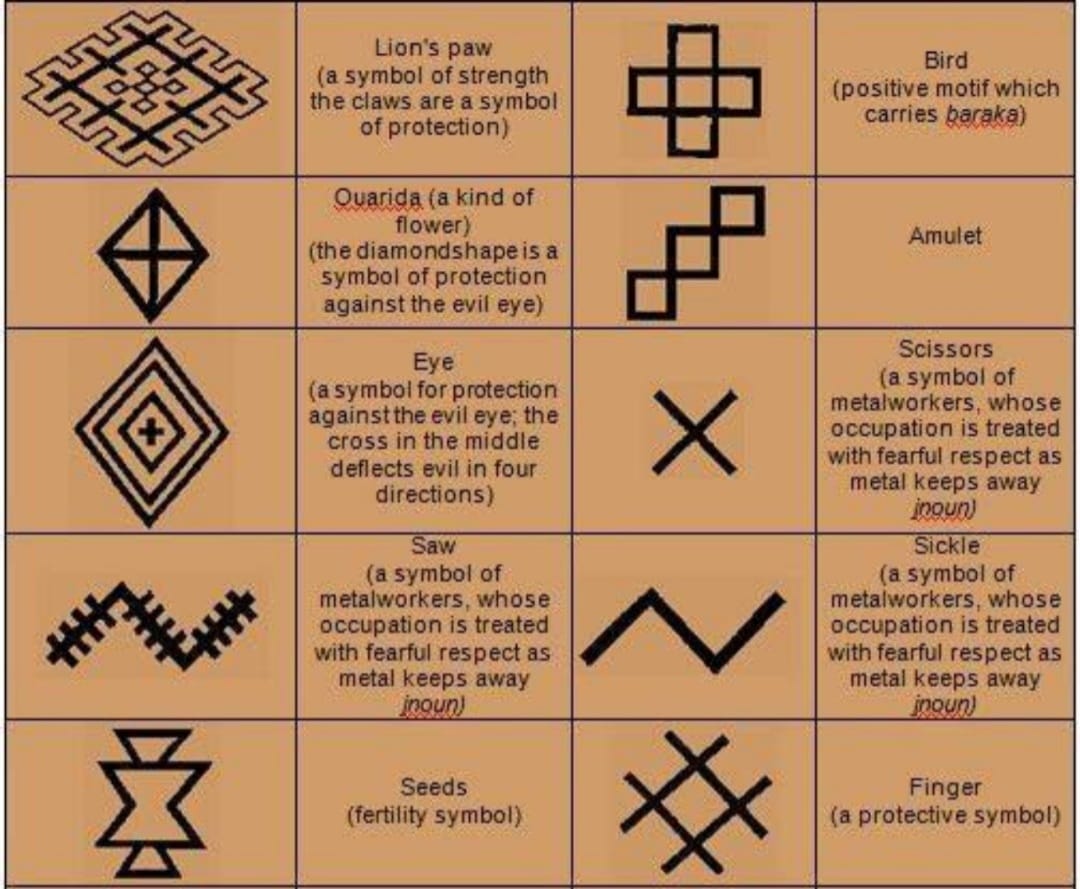Moroccan Berber carpets
Moroccan Nomadic rugs are popular because of their bright appearance, including a distinctive ashy persona, absence of geometry, conceptual effect, gentle palm wool stack, weavers’ innovation, and breathtaking themes. Signs that come together to create out-of-the-box concepts and tales rooted in Moroccan country life. Moroccan Berber carpets have their importance because of their traditional patterns and designs that make them stand out.
The patterns and their interpretations are part of a culture that has stayed independent due to Moroccan tribes’ preference for remaining secluded in their established or seminomadic societies. The carpets preserve the history of these tribes, and people collect them due to their historical and unique aspects.
But do what these lovely patterns mean, and how should we interpret them?
These patterns mean and represent reproduction, sensuality, survivability, security, and the natural environment are common themes in designs. The circle, zigzag, and Cross, for example, are feminine emblems in Moroccan carpets. A single diamond can be used to symbolize female characteristics and fecundity, as well as a vigilant protector preventing evils. A man with legs and arms stretched out could alternatively be interpreted as an X.

In Berber rugs,‘ male’ signs are frequently tall and pointed, such as these twig-like designs (left). A common and widely used ‘female’ representation is the circle (right).
Lines, twigs, ropes, and twig-and-ladder symbols are common male themes. These masculine designs are rarely encountered on their own in rugs and are frequently found on the carpet’s outside margins, with feminine designs in these borders.

The middle of this old Azilal rug is filled with swirling characteristically ‘feminine’ patterns, while the encircling border is made up of solid symbols.
Symbols of the Berbers
Many emblems have lost their significance over time, but parents and grandparents have passed from generation to generation. There are several patterns and motifs through decades where weavers may claim that they merely weave what they’ve learned because they can’t communicate what they’ve learned. Moroccan artworks were unique, even while representing certain tribe customs and culture, and as a result, they must be viewed with care, as we do not know what particular patterns were created for or how to interpret them. To use it, we’d need to be familiar with the songs, traditions, and myths of various tribes.

Berber designs and motifs were frequently used in tattooing on the faces and torso.
Some of the common shapes seen in Berber carpets – the circle, zigzag, Cross, line with shading, and etc – may also be seen as geometric signals in European cave drawings and in horns or bones, ranging around 30,000 to 10,000 BC.
We always turn to Moroccan Arts for colors and high culture. We enjoyed reading Bruno Barbettes’ tome “Berber Carpets of Morocco.” There seems to be little questionnaire and accurate knowledge about the origins of the signs used in Moroccan carpets.
Moroccan Berber carpets
Moroccan Nomadic rugs are popular because of their bright appearance, including a distinctive ashy persona, absence of geometry, conceptual effect, gentle palm wool stack, weavers’ innovation, and breathtaking themes. Signs that come together to create out-of-the-box concepts and tales rooted in Moroccan country life. Moroccan Berber carpets have their importance because of their traditional patterns and designs that make them stand out.
The patterns and their interpretations are part of a culture that has stayed independent due to Moroccan tribes’ preference for remaining secluded in their established or seminomadic societies. The carpets preserve the history of these tribes, and people collect them due to their historical and unique aspects.
But do what these lovely patterns mean, and how should we interpret them?
These patterns mean and represent reproduction, sensuality, survivability, security, and the natural environment are common themes in designs. The circle, zigzag, and Cross, for example, are feminine emblems in Moroccan carpets. A single diamond can be used to symbolize female characteristics and fecundity, as well as a vigilant protector preventing evils. A man with legs and arms stretched out could alternatively be interpreted as an X.

In Berber rugs,‘ male’ signs are frequently tall and pointed, such as these twig-like designs (left). A common and widely used ‘female’ representation is the circle (right).
Lines, twigs, ropes, and twig-and-ladder symbols are common male themes. These masculine designs are rarely encountered on their own in rugs and are frequently found on the carpet’s outside margins, with feminine designs in these borders.

The middle of this old Azilal rug is filled with swirling characteristically ‘feminine’ patterns, while the encircling border is made up of solid symbols.
Symbols of the Berbers
Many emblems have lost their significance over time, but parents and grandparents have passed from generation to generation. There are several patterns and motifs through decades where weavers may claim that they merely weave what they’ve learned because they can’t communicate what they’ve learned. Moroccan artworks were unique, even while representing certain tribe customs and culture, and as a result, they must be viewed with care, as we do not know what particular patterns were created for or how to interpret them. To use it, we’d need to be familiar with the songs, traditions, and myths of various tribes.

Berber designs and motifs were frequently used in tattooing on the faces and torso.
Some of the common shapes seen in Berber carpets – the circle, zigzag, Cross, line with shading, and etc – may also be seen as geometric signals in European cave drawings and in horns or bones, ranging around 30,000 to 10,000 BC.
We always turn to Moroccan Arts for colors and high culture. We enjoyed reading Bruno Barbettes’ tome “Berber Carpets of Morocco.” There seems to be little questionnaire and accurate knowledge about the origins of the signs used in Moroccan carpets.


